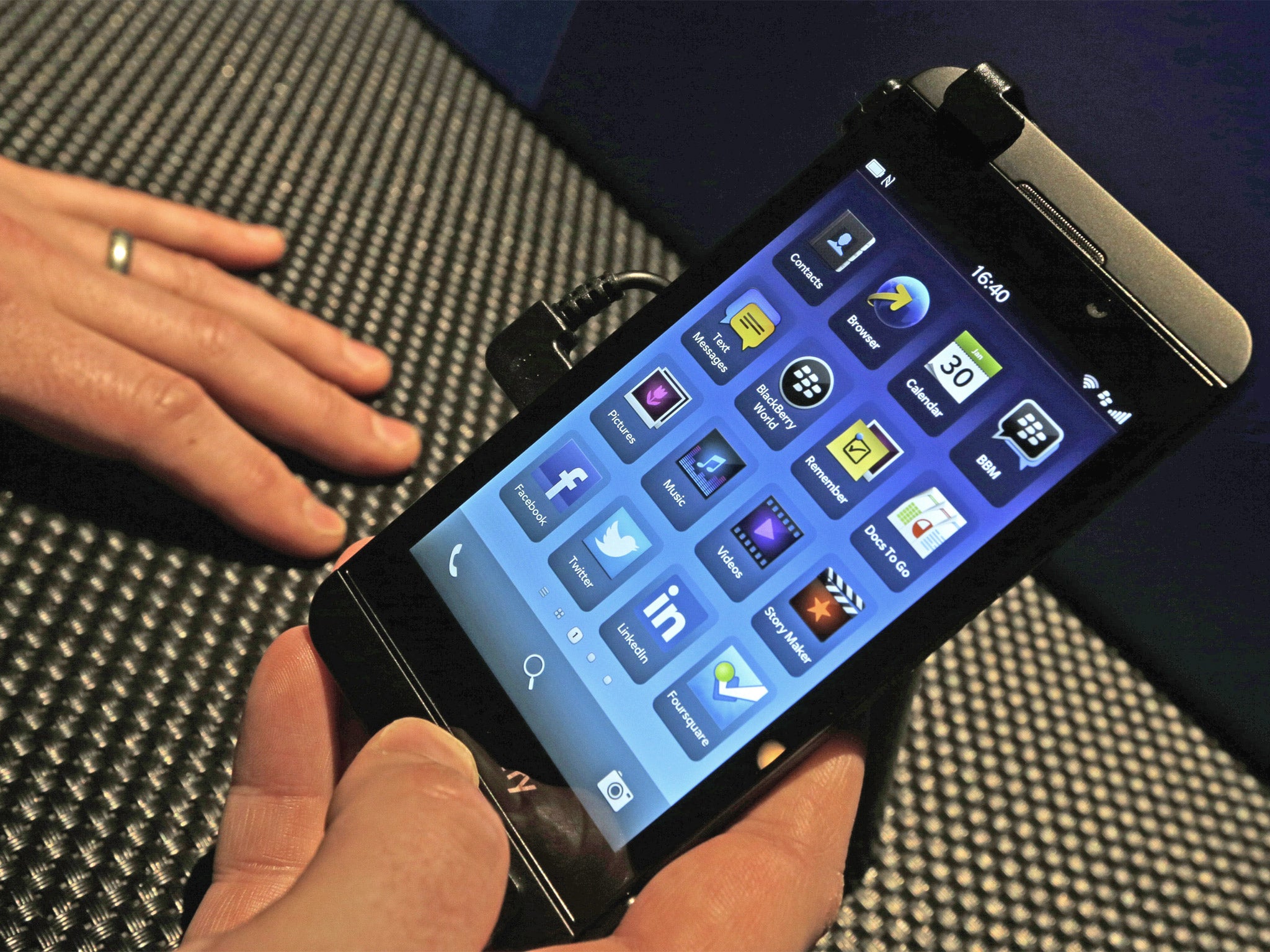BlackBerry 10: A show-stopping debut for a new operating system and handset
BlackBerry has a key advantage. It makes both hardware and software – only Apple matches this – so it can ensure that everything works together perfectly.

Hear that whooshing noise? It's the sound of countless IT directors punching the air. BlackBerry 10 is here. After long months of anticipation, BlackBerry is back in business, it hopes.
The company’s problems began when BYOD became fashionable. If you don’t know this abbreviation, BYOD stands for Bring Your Own Device. This refers to the phenomenon where staff lobbied their employers to be allowed to use their own iPhone or Samsung Galaxy III, say, for work. The bean counters cheered – we don’t have to buy our staff BlackBerry handsets any more, they thought – but Chief Information Officers reeled as they realised the security implications. BlackBerry may not have had the sexiest operating system or endless apps, but the security was exceptional. Now companies found themselves supporting lots of different smartphones and tablets.
So part of the intention of BlackBerry 10 and the new Z10 handset which went on sale within hours of the launch is to win back those people who deserted for Apple and Android.
BlackBerry has a key advantage. It makes both hardware and software – only Apple matches this – so it can ensure that everything works together perfectly. It means design of hardware and software are sympathetic and well-integrated.
The design of the Z10 makes clear it is a consumer phone. It even looks a bit like a bigger iPhone 5 with its flat back and front and curved corners. The screen is a little bigger – 4.2ins – and the resolution is noticeably higher than Apple’s Retina display. It looks pin-sharp and detailed. Especially good for video.
Although it’s big, it feels good in the hand and is easy to use. There’s no home button as there is on the iPhone. To wake the screen, you don’t need to press a power button. With BlackBerry 10, it’s all about gesture. Swipe up the screen to wake it – it feels more intimate and satisfying than other systems.
Once awake, it is noticeably different software from rivals – which may mean would-be purchasers trying it briefly instore find it too unfamiliar. There’s definitely a learning curve here, but after a relatively brief period of uncertainty I found it intuitive and straightforward.
Key to this is the Hub, a place where you can find all the latest emails alongside your calendar appointments, Facebook messages, Twitter mentions and LinkedIn notifications. Wherever you are on the phone, whatever you’re doing, the Hub is always there, just out of sight. Swipe up and to the right and the Hub appears, even if you’re playing video, say. Check if there is anything you need to see and if not swipe back to your video. The key difference from Apple, say, is that you don’t need to leave the app you’re using to Peek (as BlackBerry calls it) at the Hub.
BlackBerry is strong on multi-tasking – there’s no home screen in the recognised sense but there’s a screen which shows active apps. And its skill with multiple apps running simultaneously. It showed this on its severely underrated tablet, the PlayBook.
BlackBerry Balance is a key feature if you’re a business user on the Enterprise service. It effectively divides your phone in two, so you can’t mix work and personal information. If you’re in personal mode you can’t even see your work emails, let alone accidentally copy business-critical information into a personal message or Facebook. Those IT directors will cheer for this, too.
But the success of the Z10 will largely rest on winning back those customers who fled for the gorgeous hardware and exceptional user interface of the iPhone or fancied the range of phones running Android. The task is tougher here, though at least BlackBerry has 70,000 apps available on day one. This is a remarkable achievement and is many ways is enough to be going on with. Apple and Android have over 700,000 apps each, but the number of jewels is much lower. Even so, there are gaps among those available despite the presence of popular names like Skype and Angry Birds.
The camera is a crowd-pleaser. The 8MP sensor is efficient and there are features like TimeShift. This is clever. It shoots multiple images quickly and saves them all. Then you can mix and match elements from different shots to create the best result. So if one person’s blinking in the first shot and another looks best in the fourth, you can make this work.
It’s great. But is it enough? We’ll know in a few months, when BlackBery has released its second handset with a physical QWERTY keyboard to appeal to BlackBerry loyalists (though the virtual keyboard here is spectacularly good with suggestions of the next word as you finish the last one).
Meantime, this is a show-stopping debut for a new operating system and handset.
Join our commenting forum
Join thought-provoking conversations, follow other Independent readers and see their replies
Comments